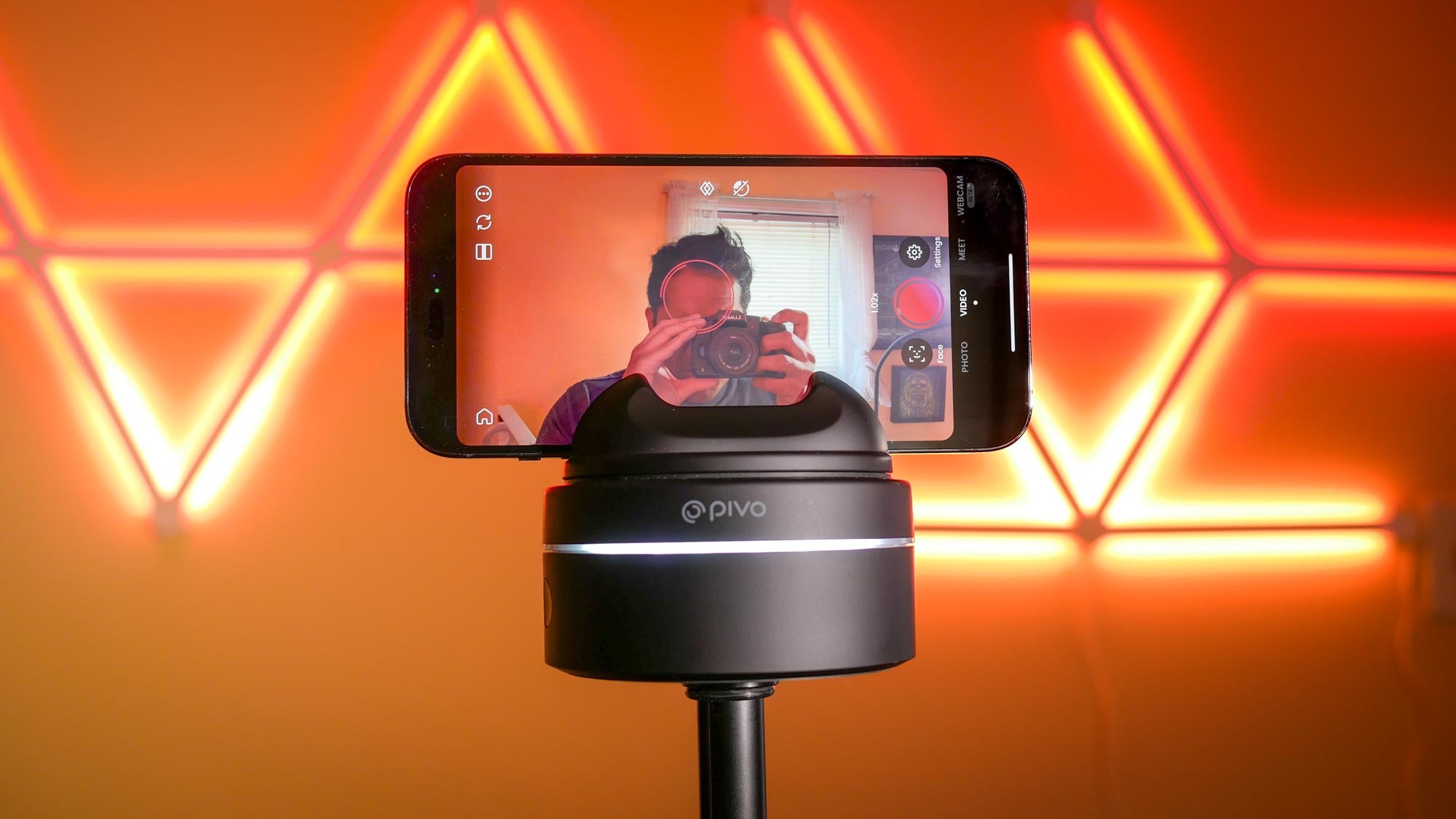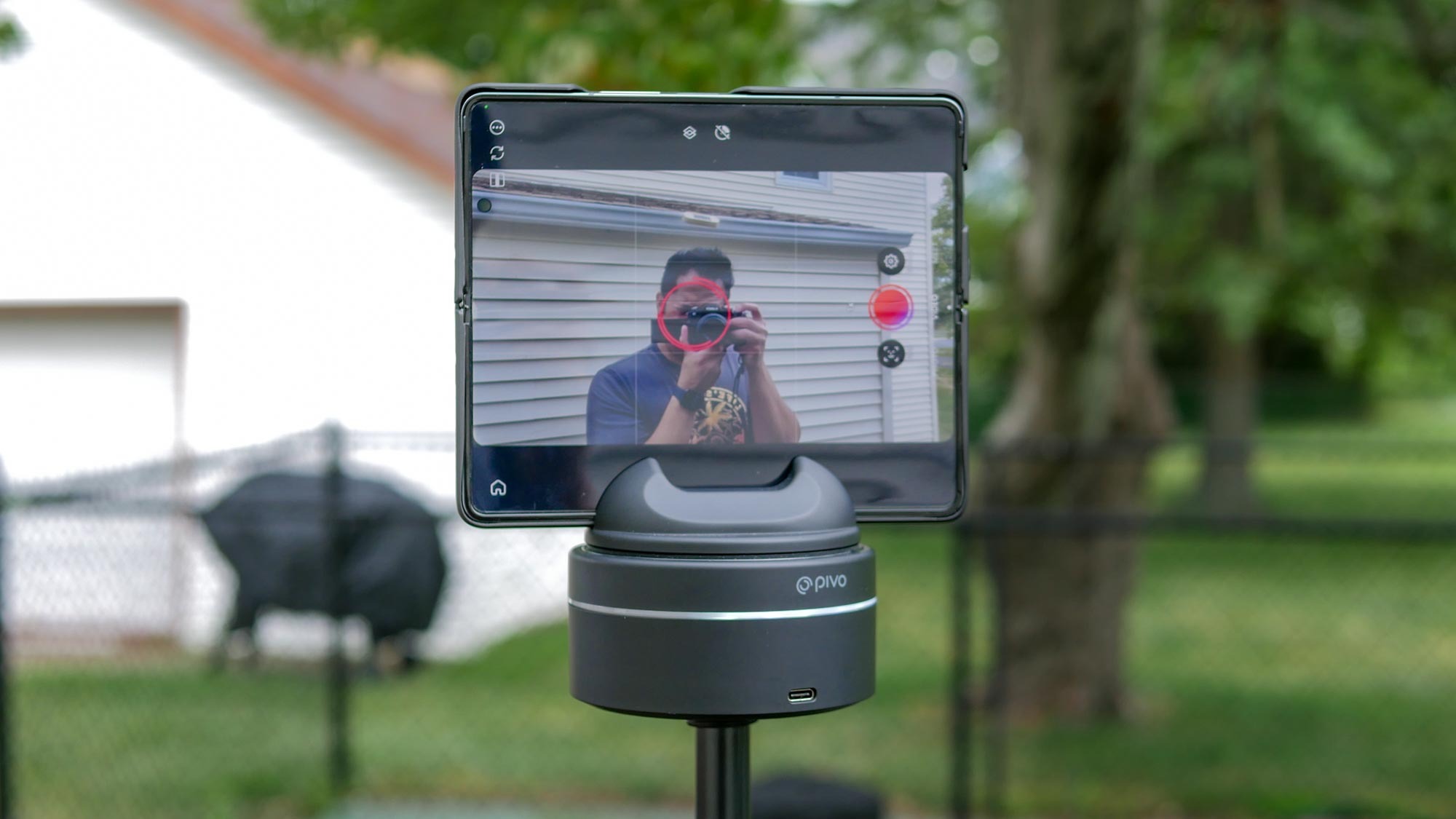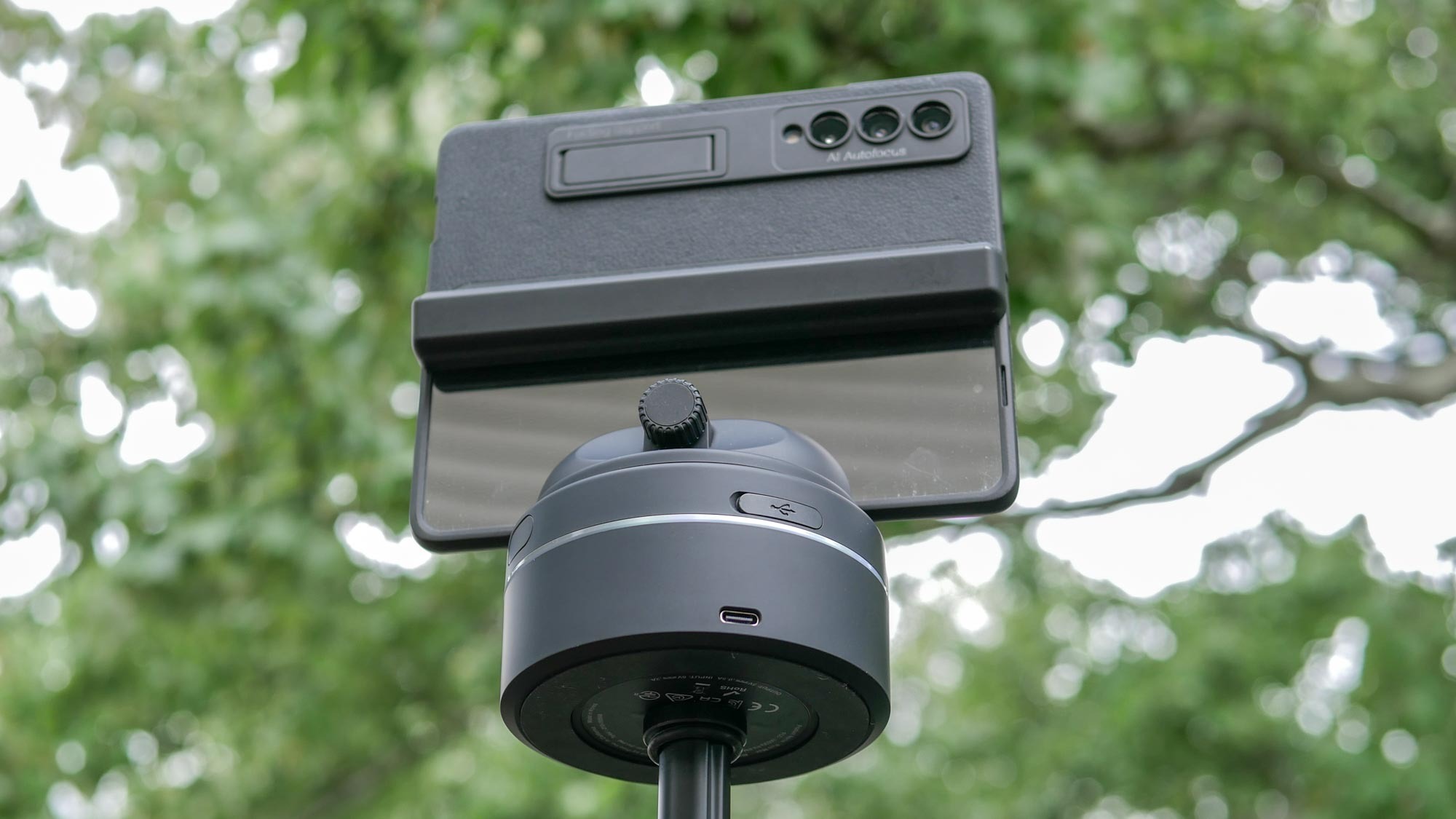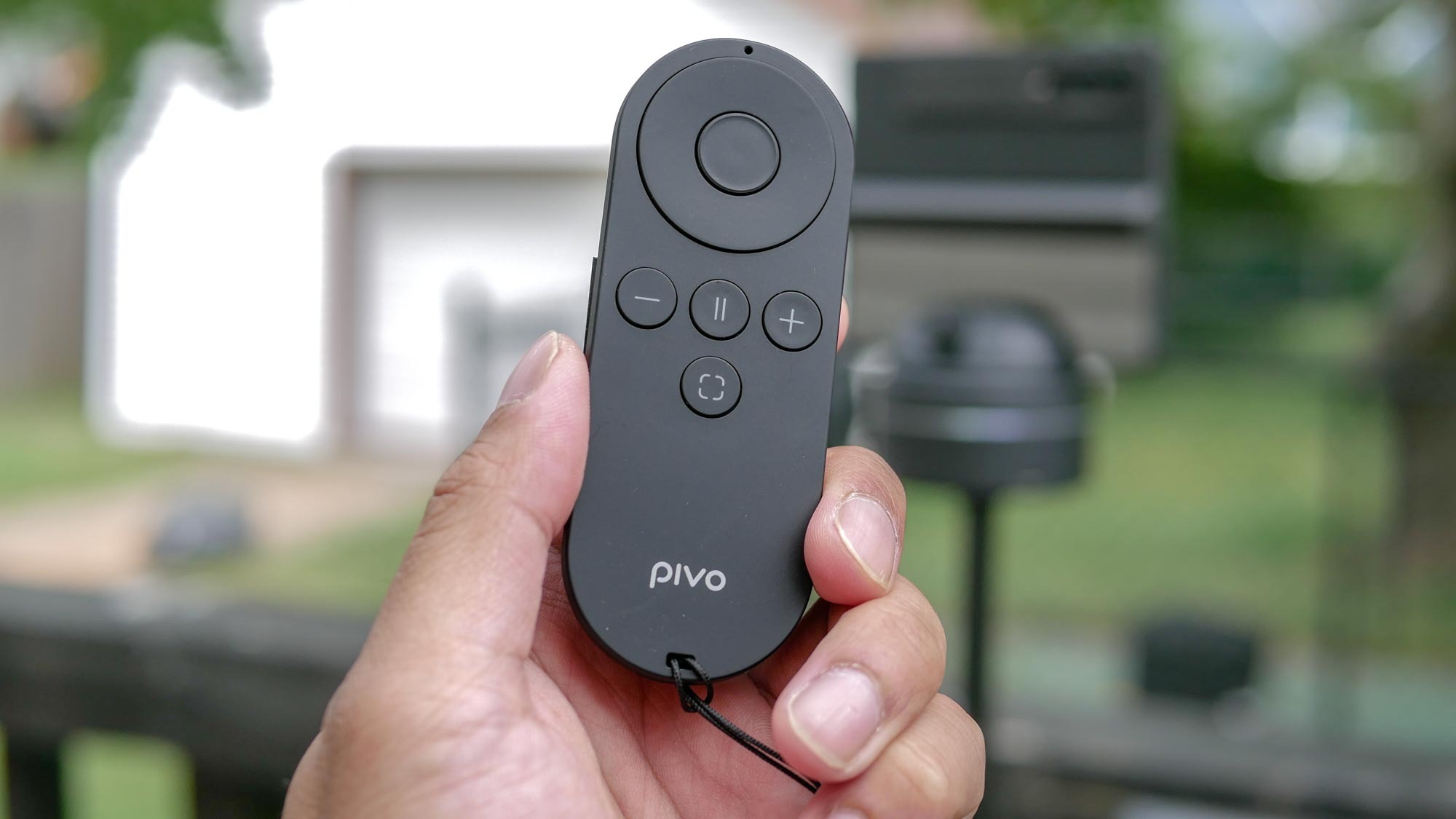Forget Apple’s CenterStage — this gadget keeps me in frame for all my YouTube videos
It's like having your own personal camera operator

I shoot a lot of videos by myself. Whether I’m a solo operator manning two cameras on separate tripods, or the on-camera talent for a YouTube video, it can be tough trying to make sure what I’m recording stays centered in the shot. Sometimes I’m a little off to the left or right, which is why I can’t tell you enough about how the Pivo Max boosted my video production quality.
The Pivo Max is an auto-tracking smartphone mount that rotates to follow my movement. Think of it much like Apple’s Center Stage feature for the iPad and some Macs, which lets you FaceTime while keeping you centered in the frame, even if you move around.
As a videographer that frequently records with a smartphone or mirrorless camera, I can’t tell you how much work is involved with ensuring that I'm always centered while recording video of myself. I’ve wasted a lot of time on reshoots because of this.
That’s why I’ve been using the Pivo Max to ease that burden, and it's hard to quantify how much of a lifesaver it’s been. Here’s why.
It’s like having your own camera operator

Anyone that shoots video of themselves can share my sentiment about the process of recording yourself with a smartphone. It’s even worse when you’re using the rear cameras of your smartphone, since you really can’t tell if you’re centered.
Enter the Pivo Max, which effectively works like your own personal camera operator.
Since it connects to my smartphone via Bluetooth and offers face-tracking, this smartphone mount smoothly pans left or tight — always keeping me in the center no matter what. I also like that you can adjust the intensity of its movement, so it can be gentle or super sensitive depending on what I want.
Get instant access to breaking news, the hottest reviews, great deals and helpful tips.

Using the Pivo app, I can confidently let it record me while also using my smartphone’s rear camera even if I can’t see the framing myself, because let’s face it, you’ll get the best quality out of that camera. Don’t get me wrong, I know how incredibly useful it is to use the front-facing camera to see myself while recording, but when I'm looking to maintain my YouTube production quality, I want to leverage the best camera on my phone.
Supports mirrorless cameras too

The best camera phones have a lot to offer me, like how the Galaxy S23 Ultra offers manual video controls and a portrait video mode to get that cinematic look. But when I need the best photos I can shoot, I insist on using my mirrorless cameras. Impressively, I was surprised that the Pivo Max was able to support my weighty camera setup.
While it comes standard with a smartphone holder to cradle my phone, I can actually remove it to reveal a ¾-inch screw mount that I use to attach my mirrorless camera. It held up nicely, despite the added weight of my SmallRig cage and the Samsung Galaxy Z Fold 4 fastened to it.

Technically, you still need a smartphone if you intend to use the Pivo Max with a mirrorless camera like my Panasonic Lumix S5. I also had to take into consideration the framing of my smartphone and camera, but once I managed to get myself centered on both, it followed me perfectly. I would suggest moving at a normal pace at most, since the motor tends to work harder with heavier payloads. It also come with a separate remote when I want to control the Pivo Max without having my smartphone attached.
As someone who frequently records acting reels using two mirrorless cameras, one wide shot and the other a closeup, I found the Pivo Max perfect as my second camera operator with the wide shot.
A few, minor drawbacks

My overall experience with the Pivo Max has been generally positive, mainly for the added utility it offers in tracking a subject. I just wish that I could use the native camera app instead of relying on the Pivo+ app to use it. At least it offers 4K video recording with the rear camera (1080p for the front), but the app doesn’t let me switch to any other camera except the main one — nor are there manual video controls.
Despite these minor drawbacks, I was actually able to connect my wireless DJI Mic receiver to my Samsung Galaxy Z Fold 4 and use it as the audio source with the Pivo+ app. This is important because it keeps my audio clear no matter how far away I am from my phone.
It’s become one of my favorite smartphone accessories that I bring along with me on all of my video shoots.
More from Tom's Guide
- I’m a videographer and there’s one thing I love about the Motorola Razr+ — and one thing I hate
- I'm a videographer and this $9 phone accessory is a lifesaver — here’s why
- Sony's new vlogging camera makes me want to ditch my iPhone for recording videos

John’s a senior editor covering phones for Tom’s Guide. He’s no stranger in this area having covered mobile phones and gadgets since 2008 when he started his career. On top of his editor duties, he’s a seasoned videographer being in front and behind the camera producing YouTube videos. Previously, he held editor roles with PhoneArena, Android Authority, Digital Trends, and SPY. Outside of tech, he enjoys producing mini documentaries and fun social clips for small businesses, enjoying the beach life at the Jersey Shore, and recently becoming a first time homeowner.
